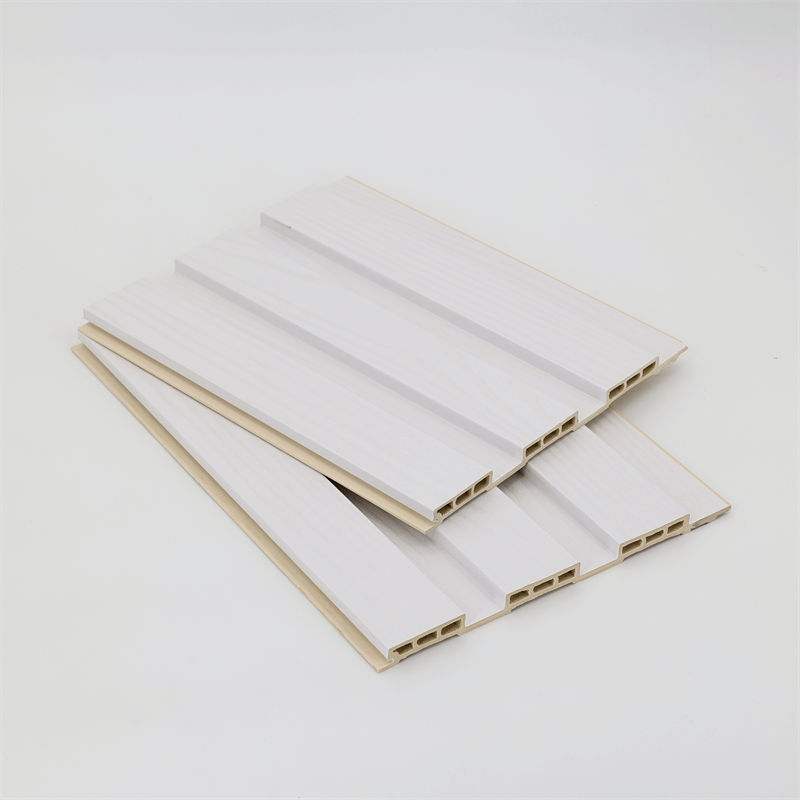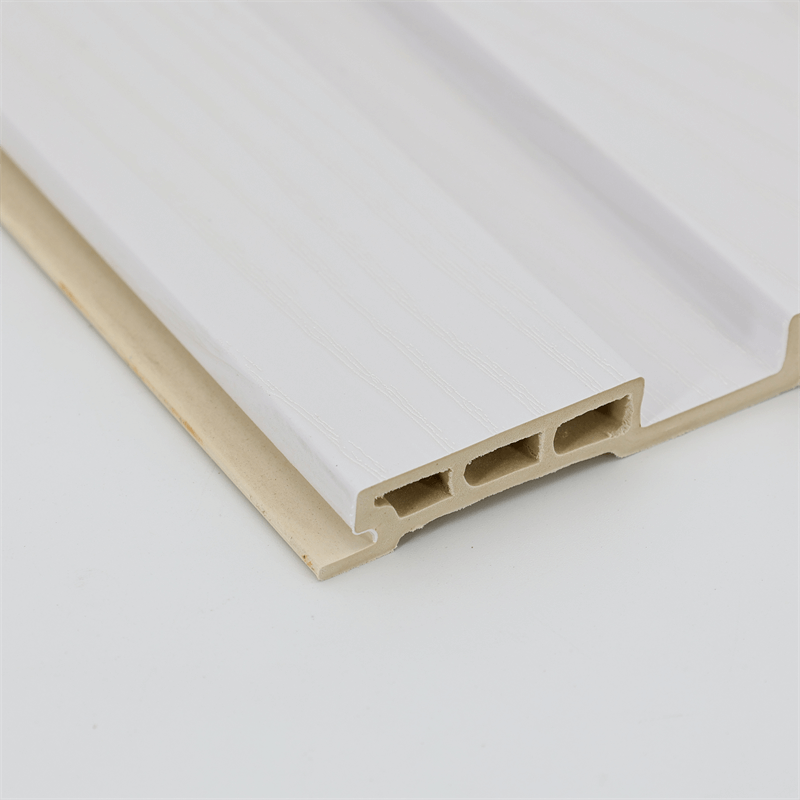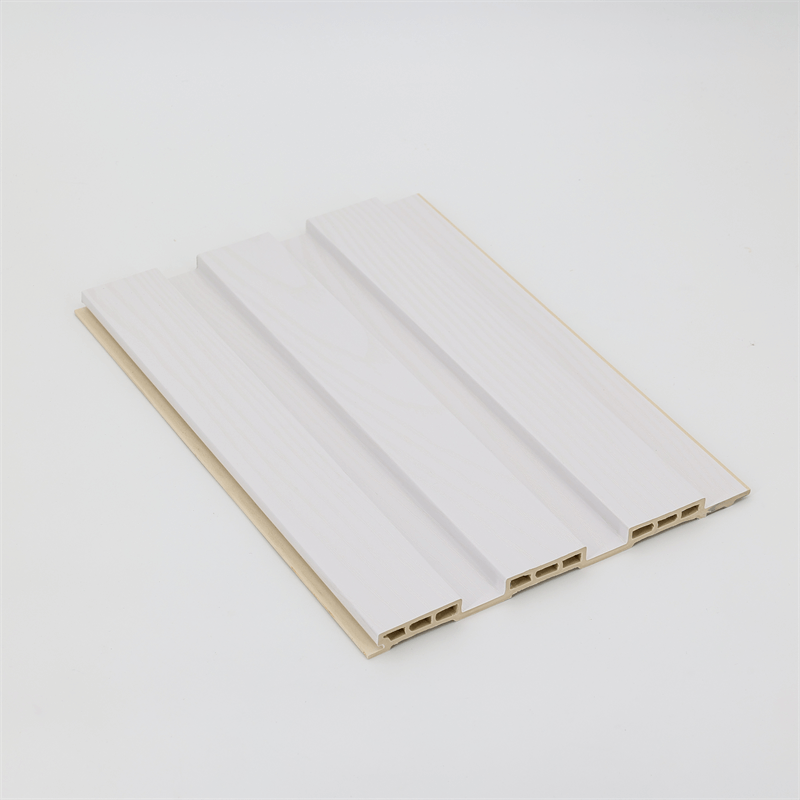In recent years, WPC (Wood Plastic Composite) wall panels have gained significant popularity in the construction industry due to their unique combination of durability, functionality, and aesthetics.
Initially developed as a sustainable alternative to traditional wooden panels, WPC wall panels have evolved to become an essential element in modern architectural design.
This essay explores the evolution of WPC wall panels, highlighting their journey from being primarily functional to becoming a prominent aesthetic feature in contemporary building designs.
I. The Functional Foundation of WPC Wall Panels
WPC wall panels were initially developed to address the limitations of traditional wooden panels.
These panels combine wood fibers or flour with thermoplastic polymers, resulting in a material that offers enhanced durability, resistance to moisture and rot, and reduced maintenance requirements.
The functional benefits of WPC wall panels, including their high strength, stability, and resistance to environmental factors, quickly made them a preferred choice in various applications, such as exterior cladding and interior wall coverings.
II. Technological Advancements in WPC Wall Panels
As the demand for WPC wall panels grew, manufacturers focused on improving the technological aspects of the product.
Advances in manufacturing techniques and material compositions led to significant enhancements in the quality and performance of WPC wall panels.
These advancements included improved dimensional stability, better color retention, and increased resistance to UV radiation.
Additionally, manufacturers incorporated features such as interlocking systems and tongue-and-groove designs, simplifying the installation process and ensuring a seamless finish.
III. Aesthetic Transformations in WPC Wall Panels
While functionality played a pivotal role in the early development of WPC wall panels, the industry recognized the importance of aesthetics in architectural design. Manufacturers began to explore innovative ways to enhance the visual appeal of WPC panels, offering a wide range of colors, textures, and finishes that mimic natural materials such as wood, stone, and brick.
The ability to replicate the look and feel of these materials with WPC opened up new possibilities in interior and exterior design, enabling architects and designers to achieve a desired aesthetic while enjoying the benefits of WPC’s durability and low maintenance.
IV. Customization and Design Freedom
One of the most significant advancements in WPC wall panels is the ability to customize designs according to specific project requirements.
Manufacturers now offer a plethora of design options, including embossed patterns, engraved textures, and even the option to create custom designs.
This customization capability allows architects and designers to explore their creativity, transforming WPC wall panels into unique visual elements that contribute to the overall aesthetics of a space.
Whether it’s creating a modern and sleek look or a rustic and traditional ambiance, WPC wall panels provide the design freedom to cater to diverse architectural styles and client preferences.
V. Sustainability and Environmental Considerations
Alongside their functional and aesthetic evolution, WPC wall panels have also garnered attention for their sustainable qualities.
The use of wood fibers or flour combined with recycled thermoplastic polymers contributes to the reduction of waste and the conservation of natural resources.
By utilizing recycled materials and reducing reliance on traditional timber, WPC wall panels offer an eco-friendly alternative to traditional building materials.
Furthermore, the manufacturing process of WPC wall panels often involves low energy consumption and emits fewer greenhouse gases compared to other materials.
This aligns with the increasing demand for sustainable construction practices and green building certifications.
Architects and designers can confidently specify WPC wall panels, knowing that they contribute to the overall sustainability goals of a project.
VI. Advantages Over Traditional Materials
The evolution of WPC wall panels has also highlighted their advantages over traditional materials, such as wood, stone, and brick.
WPC panels offer superior resistance to moisture, rot, and pests, eliminating the need for frequent maintenance and reducing lifecycle costs.
They are also lightweight, making them easier to handle and install compared to heavy stone or brick materials.
The durability and weather resistance of WPC wall panels ensure long-lasting performance, even in harsh environmental conditions.
Additionally, the versatility of WPC wall panels allows for easy customization and modification.
They can be cut, shaped, and installed in various configurations to create unique and eye-catching designs.
This flexibility opens up opportunities for architects and designers to experiment with different patterns, textures, and color combinations, resulting in truly distinctive architectural expressions.
VII. Cost Considerations
When considering the overall cost of a project, WPC wall panels offer several advantages.
While the upfront cost of WPC panels may be slightly higher than traditional materials, their long-term durability and low maintenance requirements make them a cost-effective choice.
The reduced need for repairs, repainting, and replacement over the years significantly decreases the lifecycle costs associated with the panels.
Moreover, the lightweight nature of WPC wall panels simplifies transportation and installation, leading to potential cost savings during the construction phase.
The panels can be installed efficiently, reducing labor costs and project timelines. As a result, WPC wall panels offer a compelling combination of initial investment and long-term cost savings.
The evolution of WPC wall panels has transformed them from functional building components to aesthetically appealing design elements.
Technological advancements, customization options, sustainability features, and cost advantages have all contributed to their growing popularity in the construction industry.
Architects, designers, and homeowners are increasingly recognizing the versatility, durability, and visual appeal of WPC wall panels.
As the demand for sustainable and visually striking building materials continues to rise, the evolution of WPC wall panels is expected to continue.
Manufacturers will likely explore new ways to enhance their performance, aesthetics, and sustainability credentials.
With their ability to balance functionality and beauty, WPC wall panels have undoubtedly become a noteworthy component in modern architectural design, and their future looks promising as they continue to redefine the possibilities of wall cladding solutions.
The evolution of WPC wall panels from primarily functional to a prominent aesthetic feature in modern architectural design has transformed the construction industry.
Through technological advancements and a focus on aesthetics, WPC wall panels have become a versatile and sustainable solution for interior and exterior applications.
The ability to combine functionality, durability, and aesthetic appeal in a single material has made WPC wall panels a preferred choice for architects, designers, and homeowners alike.
As the industry continues to innovate and push the boundaries of design possibilities, WPC wall panels are poised to play an even more significant role in shaping the buildings of the future.



